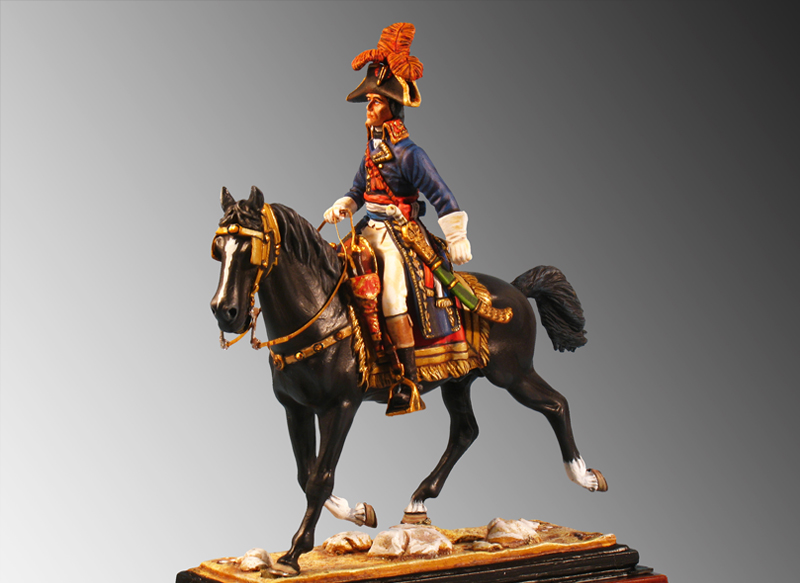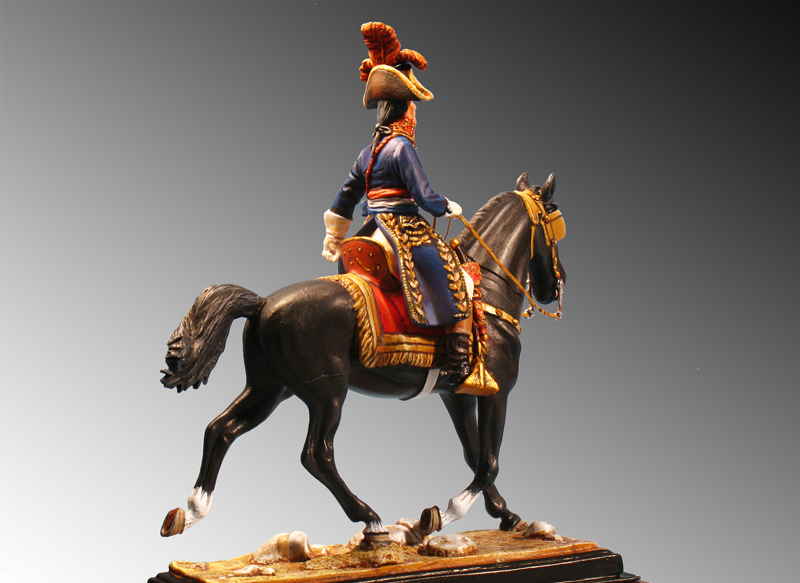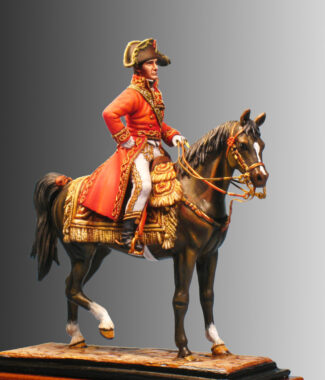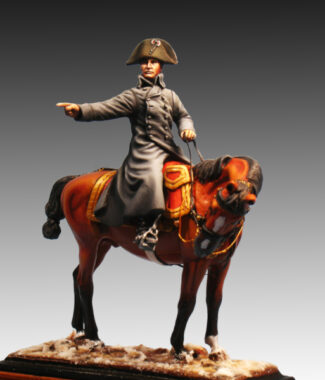You must be logged in to post a review.
EGYPT – 1798
€68.00
Figure to assemble and paint
Ref.: 04 – NAP
Weight: 250 grs.
Material: White Metal
Numbre of Pieces: 18
Historical Review:
By early 1798, the armies of the French Republic had defeated all but one enemy: Great Britain. The confrontation, which prominent French leaders equated, due to the antagonistic essence of both countries, to the Punic Wars between Rome and Carthage, had to be decided outside Europe. The British naval victories of 1797 made an invasion of Britain unfeasible.
The intriguing foreign minister, Talleyrand, and the hero of Italy’s campaigns, Bonaparte, pointed out the unexpected scenario where France should focus its efforts: Egypt, an Ottoman province whose conquest should give it a privileged strategic position between the Mediterranean and the Indian Ocean. The ultimate chimerical goal was to reach India and deprive the British of the cotton-nourishing market for their booming textile industry.
Nothing went as planned, and yet Napoleon’s campaign in Egypt is the most evocative of his campaigns: waged on a steamy stage, amid ruins of an ancient civilization, with an enemy who, while lacking the subtlety of the European rivals, it was infinitely more elusive, and with the imperative to deal with a people of an idiosyncrasy as different from the French as the Egyptian. Isolated after the destruction of their fleet at the hands of Rear Admiral Nelson, the soldiers of the Armée d’Orient had to learn to survive in a hostile environment.
In 1798, the French army managed to dodge Admiral Nelson’s British fleet to land in Egypt. Napoleon’s forces immediately won decisive battles against the Mamelukes, including the Battle of the Pyramids. Before the battle, Napoleon demonstrated his flair for the dramatic: gesturing toward the nearby pyramids, he famously addressed his men, “Soldiers, forty centuries are watching you.”
However, the Egyptian campaign did not consist solely of victories. Admiral Nelson, sore that the landing force had evaded his fleet, attacked the French fleet with a vengeance, decimating their ships at the Battle of Aboukir (Battle of the Nile) and leaving Napoleon’s forces stranded in Egypt. However, Napoleon decided to try and take advantage of the situation to further assert his power, undertaking an attempt to modernize and westernize Egypt. But before his projects could get underway, Napoleon had word that the Turkish army was preparing to attack him in Egypt. In February of 1799, the French Army of Egypt moved north into Palestine and Syria to preempt the Turks, but encountered a tough siege at British-controlled Acre. By May, a decimated French Army limped back into Egypt.
Meanwhile, back in Europe, war was breaking out. The Russian army was making conquests as far west as Switzerland, and the “Cisalpine Republic” established by the Italian campaign had crumbled. France was in chaos, and Napoleon decided to abandon his position in Egypt to pursue his career in France, in hopes of overthrowing the Directory, which he now referred to as “that bunch of lawyers.” Somehow, Napoleon again managed to sneak past Nelson’s blockade, and made a surprise appearance in Paris. On November 9, 1799, along with Talleyrand and the revolutionary Father Sieyes, Napoleon achieved a coup d’état against that Directory. The new government of the Republic was to be called the “Consulate,” as it was ruled by three consuls, of which Napoleon was to be “First Consul.”
The figure shows a young Napoleon in his thirties. He wears the uniform of the French generals in that campaign, Kléber, Dumas or his chief of staff, Berthier, among others. Cocked hat with feather duster (two years earlier, in the Italian campaigns, he had dispensed with it). The French flag worn around the waist as a general’s girdle, the special saber used in this campaign and which is kept in the Musée de l’Armée.
He rides a whole, black-cloaked Arabian horse that a local sheikh, El-Bekri, had given him as a present and which Napoleon gladly accepted. Along with the horse, he also offered him a young servant and bodyguard. A Mamluk of Armenian origin named Rustam (Roustam in French), who for fifteen years remained at Napoleon’s side.
NOTE (1)
Emmanuel-Joseph Sieyès, Count Sieyès (Fréjus, May 3, 1748 – Paris, June 20, 1836) was a French politician, ecclesiastic, essayist, and academic, one of the theorists of the constitutions of the French Revolution and of the era Napoleonic.
The Price is not inclusive of shipping costs
5% for orders over 95,00€
10% for orders over 185,00 €
15% for orders over 275,00 €
- The discount fees are exclusively on items, without shipping costs -








Reviews
There are no reviews yet.